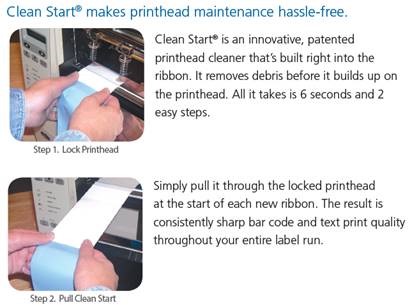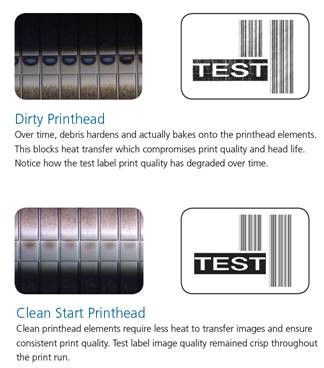07/20/2018 |
Barcode and other labels are vital to identifying and tracking products and equipment, but they’re useless if they fall off and don’t adhere properly to the surfaces you’re labeling.
Adhesive failure can happen in a number of circumstances depending on the shape and type of surface you’re labeling and the conditions that the label must endure, such as exposure to sunlight, extreme or varying temperatures, moisture, and chemicals.
Fortunately, there are specialized label adhesives designed to handle these challenges and ensure you’re labels remain adhered.
In this article, we provide a quick guide to barcode label adhesives available from Zebra Technologies, the barcoding industry’s undisputed leader in high-quality labeling solutions and supplies.
Label Adhesive Types & Applications
Acrylic adhesive is a general-purpose solution that provides long-term adhesion and durability for most standard labeling applications. Acrylic provides moderate resistance to chemicals and UV exposure, and it works across a wide temperature range.
Rubber adhesive is another general-purpose solution and provides good initial tack. It offers adhesion to rough surfaces, but it’s not recommended for applications where you need to automatically apply your labels.
High-Performance adhesive offers higher resistance to chemicals and UV exposure; it’s often an approved label for regulated applications such as indirect food contact (FDA 175.105) and applications required UL/cUL or CSA approval.
High-Temp adhesive maintains strong adhesion at temperatures over 300°F or 149°C.
Cold-Temp adhesive will maintain strong adhesion at low temperatures down to -112°F or -80°C.
All-Temp adhesive is designed for applications that require temperature resistance, but not to the extremes required of high-temp or cold-temp adhesives. A label with an all-temp adhesive can usually be applied for use in temperatures below freezing (32°F or 0°C) and often to surfaces as cold as -20°F or -29°C.
Removable adhesive enables clean removal from most surfaces without damaging the label or the surface. One example is Zebra’s 400T all-temp label, which features a removable acrylic adhesive.
Ultra-Removable adhesive is specialized to support removal from nearly all surface types, including metal and glass, without damaging the label or the surface. These qualities make an ultra-removable adhesive ideal for labeling shelves, pallets, and even paper documents.
Multi-Removable and Ultra-Removable adhesive offers dual functionality. It provides permanent long-term adhesion but also allows for clean removal. With this adhesive, you can even remove a label, adjust its position, and reapply it. These adhesives are often a good option for labeling and re-labeling cartons, totes, bins, and shelves.
High-Tack Acrylic adhesive is specially formulated for those surfaces that are truly hard to label and require resistance to chemicals and UV exposure. For these applications, a high-tack acrylic adhesive is often a good choice. It’s commonly used in UL/CuL and CSA-compliant product labeling, automotive labeling, and other applications with hard-to-label surfaces.
High-Tack and Super-Tack Rubber adhesive combines the benefits of high-tack with the flexibility of rubber, so it is well suited for hard-to-label, rough surfaces. A high-tack or super-tack rubber adhesive works best in these applications, which include shipping labels, labeling or recycled corrugate, and wood or textured substrates.
Choosing the Right Adhesives and Labels for Your Application
To get the best labeling results, you need to choose the right adhesive, the right type of label (paper vs. synthetic), and the right printing method (direct thermal vs. thermal transfer).
At Tri-State Business Systems, we can help you make the right choices by matching your needs with over 1,000 possible combinations of Zebra labels and printing supplies.
Contact us now to get a free consultation and personalized recommendation. Call us at 908-359-8001 or email us now.


